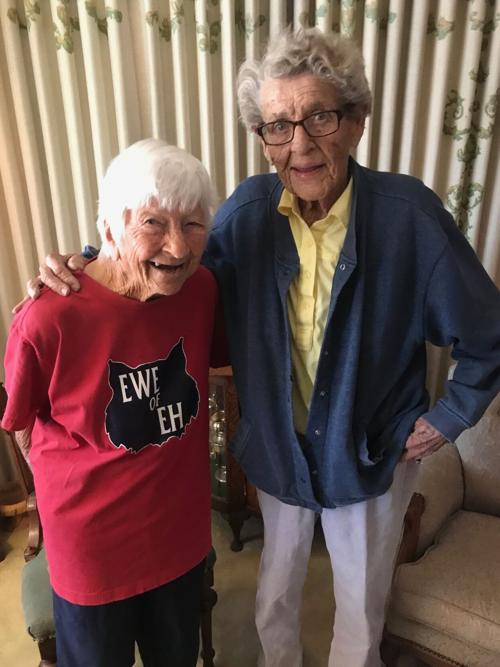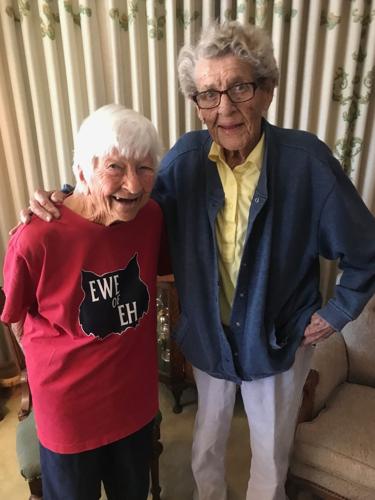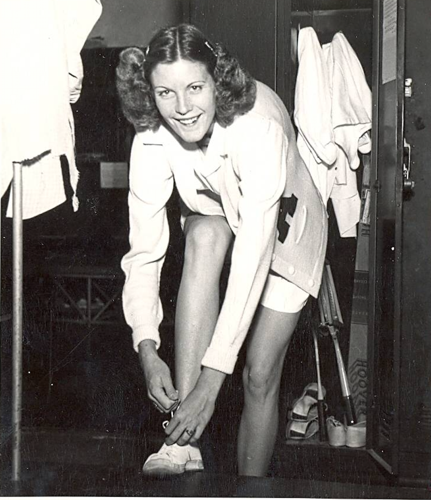├█Ķųų▒▓ź began keeping year-to-year records of its womenŌĆÖs basketball teams in 1972, its softball and volleyball teams in 1974 and its tennis team in 1982. Before that?
ŌĆ£To a lot of people, itŌĆÖs like we didnŌĆÖt exist,ŌĆØ says Mary Hines, the UAŌĆÖs 1952 Sports Woman of the Year, a swimmer, softball, tennis and volleyball player who was inducted into the UA Sports Hall of Fame in 1987. ŌĆ£We didnŌĆÖt get any publicity and we didnŌĆÖt have any money, but I loved every minute of it.ŌĆØ
Hines graduated from the UA 20 years before Title IX became, in 1972, a federal law that guarantees equity between menŌĆÖs and womenŌĆÖs high school and college sports.
ŌĆ£When we got out of college, we basically had three career choices: be a teacher, a nurse or a secretary,ŌĆØ says Hines. ŌĆ£A lot of us became PE majors because we wanted to coach, to be involved in sports. I was a slow process with not a lot of opportunity.ŌĆØ
People are also reading…
Hines made such an impact on womenŌĆÖs sports in ├█Ķųų▒▓ź, as a Wildcat athlete and then as a Hall of Fame volleyball coach at Catalina High School, that she has not been forgotten. Far from it; a week ago, she was asked to throw out the first pitch at an ├█Ķųų▒▓ź-Oregon softball game.
A day earlier, Hines sat in the living room of her former UA classmate, Harriett Leece, believed to be the oldest-living ├█Ķųų▒▓ź womenŌĆÖs letter-winner. At 96, Leece is a happy face, smiling, eager to talk about what it was like to be a pioneering female athlete in a male dominion of the 1940s and 1950s.
Leece wore a EWE of EH T-shirt, a reflection on her time as a Wildcat field hockey player. She would have displayed her ├█Ķųų▒▓ź letter sweater, but it is on display in the UAŌĆÖs Hall of Champions.
ŌĆ£I was four months pregnant with the first of my five children when I was a senior on the field hockey team (1947),ŌĆØ she says with a chuckle. ŌĆ£I competed in everything I could; I was practically raised on the ballfield and the tennis courts. I was too short to be any type of star athlete, but you couldnŌĆÖt keep me off the field.ŌĆØ
LeeceŌĆÖs spirit and enthusiasm for her alma mater are such that a few weeks ago she attended an ├█Ķųų▒▓ź baseball game at Hi Corbett Field. She has also recently been in the grandstands at Hillenbrand Stadium and at McKale Center.
Hines and Leece were among those who made the road to Title IX legislation possible, athletes from the ŌĆ£A League of Their OwnŌĆØ generation who dug the foundation for todayŌĆÖs flourishing womenŌĆÖs sports enterprises at all levels.
On Tuesday, the UA announced it will celebrate the 50th anniversary of the enactment of Title IX with a day-of recognition on June 23. The school will host a panel to discuss the history of Title IX and its impact on womenŌĆÖs sports. Among others, it is bringing 1997 NCAA softball player of the year Jenny Dalton-Hill, 2009 NCAA Woman of the Year and Olympic swimming medalist Lacey Nymeyer-John and four-time NCAA high jump champion Tanya Hughes back to their alma mater for the occasion.
Leece and Hines helped to create that path.
I asked Leece who was the best womenŌĆÖs athlete she has watched at ├█Ķųų▒▓ź. ŌĆ£Have you ever heard of Marie Jacks?ŌĆØ she asked. ŌĆ£I seemed like she was about 7 feet tall.ŌĆØ
Jacks was the UAŌĆÖs first female athlete inducted into the schoolŌĆÖs sports Hall of Fame, part of the inaugural Class of 1976, sharing the billing with Pop McKale, Button Salmon and Art Luppino, immortal names in UA sports history.
ŌĆ£Marie was one of the best tennis players I ever saw,ŌĆØ Leece says now. ŌĆ£Oh, she was a great golfer, too. She became a golf instructor. If someone like Marie Jacks came along now, they would create quite a following.ŌĆØ
Sort of like an Aari McDonald or a Jennie Finch.
ŌĆ£Marie didnŌĆÖt get to school until she was 24 or so,ŌĆØ Leece remembers. ŌĆ£After high school, I think she worked for the post office and at an airport, saving her money so she could go to college.ŌĆØ

Marie Jacks was a do-everything Wildcats athlete in the 1940s. She starred in tennis, golf and archery.
Did she earn a scholarship?
ŌĆ£We all paid our own way,ŌĆØ says Leece. ŌĆ£We were part of the WAA ŌĆö WomenŌĆÖs Athletic Association. Nobody specialized in one sport; we played all of ŌĆśem.ŌĆØ
After Leece married her high school sweetheart, Harold Leece, a ├█Ķųų▒▓ź High tennis player of note who served with the Marines Corps in the Pacific theater of World War II, she raised five children and spent more than a dozen years teaching special education students at Duffy Elementary School.
Among the scores of photographs in LeeceŌĆÖs midtown home is one of her fishing during a weekend at the familyŌĆÖs cabin in the White Mountains. She is wearing waders, holding a can of worms in one hand and a fishing pole in another.
ŌĆ£Mom wasnŌĆÖt afraid to get her hands dirty, she was all-in on whatever she was doing,ŌĆØ her daughter, Carol Ann Willingham, says. ŌĆ£She has had a great life.ŌĆØ
She also created a legacy that has carried far beyond the days she wore a ŌĆ£EWE of EHŌĆØ T-shirt for the 1947 Wildcat field hockey team.














